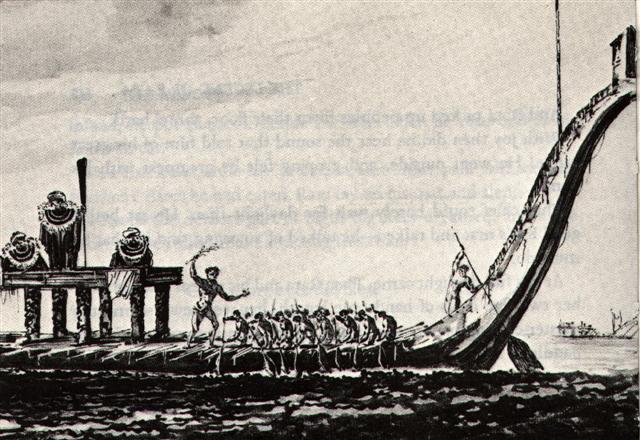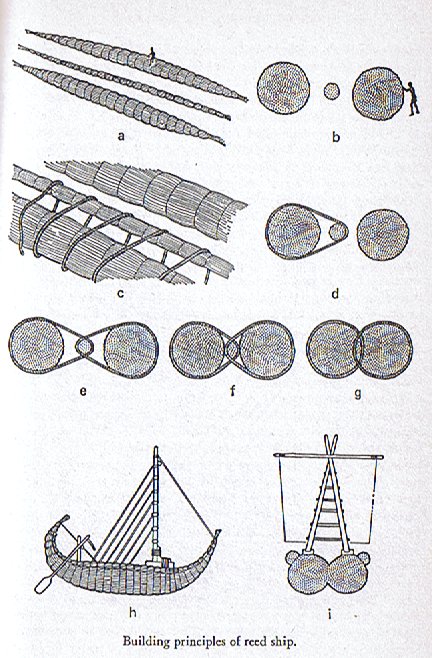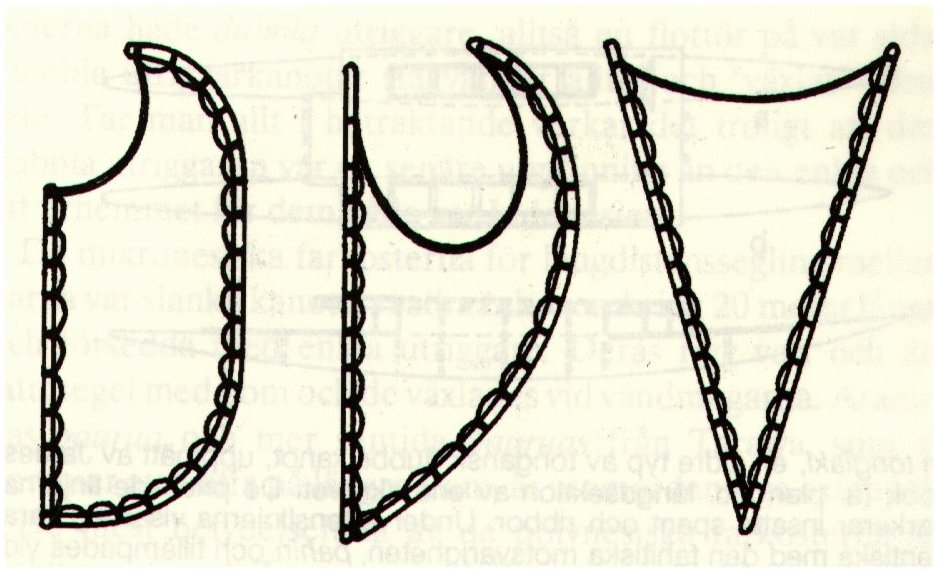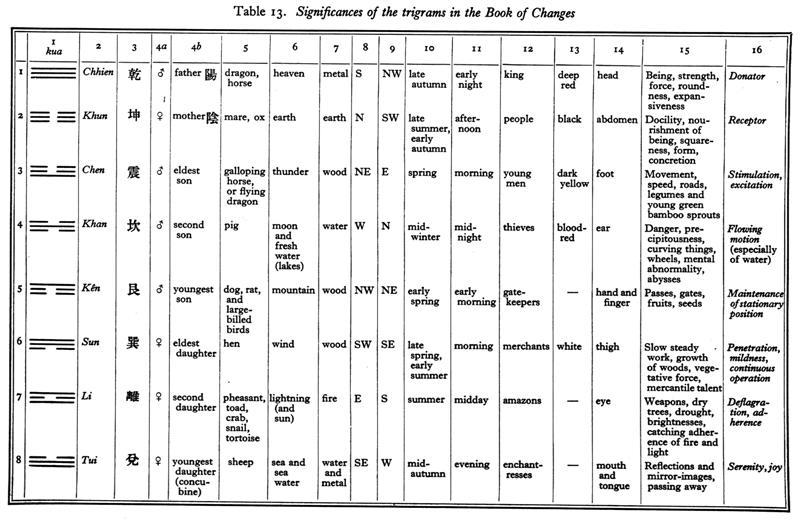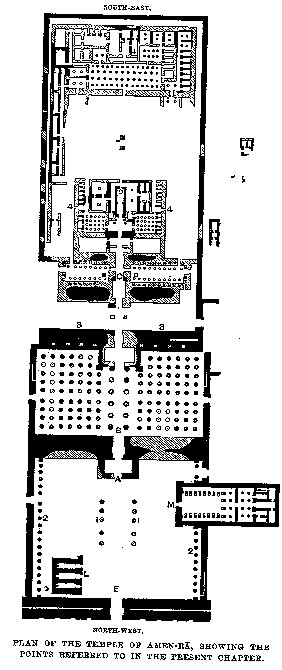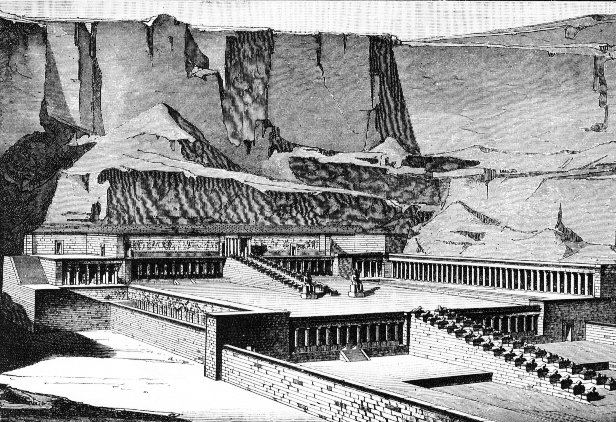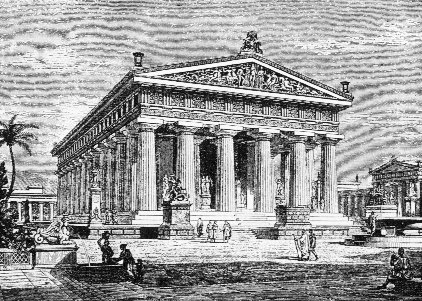|
TRANSLATIONS
In Ha6-9 we now have a possible explanation for the strange two 'threads' hanging down at left: they represent a.m., a time when sun not yet is fully grown and under the influence of mother (earth). 2 marks were below the middle in tapa mea in the preceding period, which I guessed might mean that for the creator of H sun was not fully mature before noon, he must first be 'reborn' (initiated) by the males. Also, threads are signs of the female. The morning sun (right ear from us seen) has been completed with an evening sun (left ear) and sun as a grownup person is more balanced than before. P.m. is also visible in Ha6-10 as a paler flow of sunrays, no longer as vital and forceful as during a.m. Afternoon haze has arrived over the island and the initiation rites at noon has 'pruned' the sun. In Ha6-11 the left vertical line is slightly bent, just as the back of old people. Ha6-9 should be read counterclockwise. We start at bottom left, proceed towards right and then up and return towards left. The 'flame' at right above the midpoint indicates where we are at present. This 'flame' is similar in shape to the 'flame' at left above the midpoint in the 2nd period (when sun is born):
The sun glyphs above noon are clearly fully grown and those below noon childish. But also in Ha6-9 we can see a sign of childishness (hua). It is as if the missing 3rd period sun had been dislocated to the 7th period. We can compare with A and P to see if we may receive any help in understanding:
The 7th period in A indeed looks compressed from above just like the childish glyphs in periods 1-4. And the 'flames' above midpoint in these childish suns look like the stern and bow of a Polynesian double canoe. Stern is prominent before noon, bow after noon.
This presumably explains the similarity between the 'flame' at right above midpoint in Ha6-9 and the 'flame' at left above midpoint in the 2nd period sun. They are not flames but bow and stern of the sun-boat. In the 9th period of A we can identify the mid top 'flame' as the sail. The mid bottom 'flame' of the grown-up sun looks like a centerboard, but might be a reflection in the water of the sail. In P (see below) the sun-boat is not so easily detected. But indeed the stern may be imagined in the 2nd glyph, and in the 7th glyph both stern and what may be the bowsprit may be imagined. The 8th and 9th glyphs possibly show the bow and in the 10th glyph we may see both stern and bow.
But we still have no reasonable explanation for the missing 3rd period in H. Maybe with the newly discovered sunboat we perhaps have a better explanation for the strange Y (in A) where the sail should be. This Y could very well represent the double mast needed when constructing reed ships (ref. Heyerdahl 2):
We may also imagine (cfr i in the picture above) the sail and rigging of this reed ship having influenced the design of Ha6-9 and the corresponding glyph in A:
Though the middle short vertical line looks like a single mast. And the 'hua' part of the glyph (in H) looks like only a single hull. The fact that the upper part (between the two suns) is broader does anyhow point to the sail of a reed ship. It should have a trapezoid shape. The sail types of ordinary canoes are different (ref. Lewis):
We might also imagine that the toki sign in the preceding glyph in A indicates the adze used in hewing the masts of the ship (if a reed vessel - if an ordinary vessel both masts and hull etc ):
And hua in Ha6-9 could mean the newborn ship:
In Heyerdahl 3 we find a picture of a boat with sun as its sail:
Possibly the midpoint is marked with the short vertical line (between the masts), similar to the short vertical line in the glyphs:
However, the story is much more complicated, it has only just begun. As we learned in the creation myth about Ta'aroa darkness gave way to light when the sky dome was pushed up with pillars, and the space thus created between earth and sky was Atea, who insures that there will be light. "From Ta'aroa and Atea, who figures in the early part of this mythological period as a female, the god Tane was born as a viable mass without form. Skilled artisans were called to shape Tane. They came in pairs, carrying their kits of stone tools slung over their shoulders, but at the sight of the majesty of Atea, they retired in fear. Then Atea herself assumed the task of shaping Tane, and successively formed all the anatomical details associated with the human body, including the boring of the external ear passages with a fine spiral shell. After these many plastic operations, duly enumerated in myth, Tane assumed perfect form and became the god of beauty (te atua o te purotu). Ta'aroa exalted Tane in power, and he became the god of craftsmen." (Buck) I believe that the originally female Atea created light just by being there. Lifting up the roof will automatically let light in. And then we come to understand why the hau tea type of glyph (GD41)
illustrating the sun rays from the sky at morning, noon, and evening, is closely connected also with the female.
The tapa cloth is created by women's work, they beat the bark with a mallet: "There was noise at night at Marioro, it was Hina beating tapa in the dark for the god Tangaroa, and the noise of her mallet was annoying that god, he could endure it no longer. He said to Pani, 'Oh Pani, is that noise the beating of tapa?' and Pani answered, 'It is Hina tutu po beating fine tapa.' Then Tangaroa said, 'You go to her and tell her to stop, the harbour of the god is noisy.' Pani therefore went to Hina's place and said to her, 'Stop it, or the harbour of the god will be noisy.' But Hina replied, 'I will not stop, I will beat out white tapa here as a wrapping for the gods Tangaroa, 'Oro, Moe, Ruanu'u, Tu, Tongahiti, Tau utu, Te Meharo, and Punua the burst of thunder.' So Pani returned and told the god that Hina would not stop. 'Then go to her again', said Tangaroa, 'and make her stop. The harbour of the god is noisy!' So Pani went again, and he went a third time also, but with no result. Then Pani too became furious with Hina, and he seized her mallet and beat her on the head. She died, but her spirit flew up into the sky, and she remained forever in the moon, beating white tapa. All may see her there. From that time on she was known as Hina nui aiai i te marama, Great-Hina-beating-in-the-Moon." (World of the Polynesians)
Notice the square short end where the force is at its greatest and the circular short end at the opposite side of the mallet, also the straight long lines which will be beaten into the bark. And then we of necessity must tell about the Stranger King arriving by sea to take command over the Island: "I pass over the preliminary installation of the chief as Tui Nayau at Nayau Island, though its significance will be taken into account. The ensuing investiture of the Tui Nayau as paramount of Lau consciously follows the legend of an original odyssey, which brought the ancestral holder of the title into power at Lakeba, ruling island of the Lau Group. The chief thus makes his appearance at Lakeba from the sea, as a stranger to the land. Disembarking at the capital village of Tubou, he is led first to the chiefly house (vale levu) and next day to the central ceremonial ground (raaraa) of the island. At both stages of this progression, the pretender is led along a path of barkcloth by local chieftains of the land. In Lau, this barkcloth is prescriptively a type considered foreign by origin, Tongan barkcloth. Later, at the kava ceremony constituting the main ritual of investiture, a native chieftain will bind a piece of white Fijian tapa about the paramount's arm. The sequence of barkcloths, together with the sequence of movements to the central ceremonial ground, recapitulate the correlated legendary passages of Tui Nayau from foreign to domestic, sea to land, and periphery to center. The Fijian barkcloth that in the end captures the chief represents his capture of the land: upon installation, he is said to hold the 'barkcloth of the land' (masi ni vanua). The barkcloth thus has deeper significance. In general ritual usage, barkcloth serves as 'the path of the god'. Hanging from the rafters at the rear, sacred end of the ancient temple, it is the avenue by which the god descends to enter the priest." "There is still more to the barkcloth. The barkcloth which provides access for the god/chief and signifies his sovereignity is the preeminent feminine valuable (i yau) in Fiji. It is the highest product of woman's labor, and as such a principal good of ceremonial exchange (soolevu). The chief's accession is mediated by the object that saliently signifies women." (Islands of History) Is it not reasonable to associate sun at noon with a king arriving over the sea by canoe? Is it not reasonable to then think about his taking over the land in the proper way - entering by the 'way' of the native woman (the path of barkcloth) and dying ritually (kava ceremony) to be reborn for the afternoon? Sun is arriving from the horizon, i.e. 'from foreign to domestic, sea to land, and perhiphery to center', reaching us at noon (center).
Maybe the sail of the sun-boat is woven by this same native woman (Atea?) and maybe this sail can be seen in the 7th period of the calendar:
At Ha6-10 we should once again consider why the middle vertical line is shorter, thereby creating wedges at top and at bottom. The sky dome (the shell of Rumia) must be higher at noon and therefore the middle vertical line ought to be longer, not shorter. We can clearly see this in our minds, but the message in both Ha6-9 and Ha6-10 says that the middle vertical line is shorter. The tapa beater perhaps imprints the cloth with straight lines and maybe what we see in these glyphs is a piece of such cloth. The mature sun's association with woman (sun in the 7th period) tends to leave imprints on him, 'straigthening him out' so to say (with sexual overtones). The sail of the sun-boat is reasonably woman's work. This 'sail' propels him forwards, may represent his 'motivation'. The (male) fully mature sun
has a head with a wedge pointing upwards (noon), and therefore the opposite (female) must have a wedge at top which points downwards. We may then explain this type of glyph
as female in character. Furthermore, as they occur together this type of glyph and the tapa mea type of glyph, we suddenly can see a pattern. First comes the femal white 'cloth' (hau tea), then the male red 'cloth' (tapa mea). First comes 'darkness' (moon), then arrives 'light' (sun). First yin, then yang. Another possible way to illustrate 'female' could be to 'break' a henua in two, as we have seen in Ea2-15:
(There is as hint in these two pieces that the ends of a broken henua should have 'indentations'.) This broken henua reminds us not only of the two phases of the moon (waxing and waning) and the two appearances of Venus (morning and evening 'star') - in both cases with a dark period involved - but it also reminds us of the hexagrams in I Ching. Male is there an unbroken long straight line and female such a line broken in two. There are 64 hexagrams (the same number of variations as in the picture with white and black illustrating that yang may generate yin and vice versa) and these variations are enough to make a 'filing system' of everything conceivable (ref. Needham II). With similar trigrams the number of variations are only 8 (= 23 instead of 26) and they are more easy to grasp:
Father has three long unbroken lines, mother three broken lines, the sons have one unboken line the location of which defines if it is the oldest son (bottom), the middle son (middle) or the youngest son (top). The same pattern is used for the three daughters - though here with a broken line defining 'position'. According to Needham this simpler scheme with 8 trigrams is not older than the scheme with 64 hexagrams, rather a simplified version. He also thinks that the hexagrams and trigrams may have originated from short and long sticks being used for divination purposes. Although the concept (singular because they 'need' each other) of yang and yin clearly - I think - were in the minds of those who wrote rongorongo I can see no sign of these hexagrams or trigrams. Broken henua on the other hand probably represent broken sticks, i.e. henua are 'sticks' which are unbroken. Are yin and yang concepts which are older than the hexagrams / trigrams? Did the Polynesians once a long time ago lived in or in the vicinity of China and emigrated after yang and yin was there but before the hexagrams / trigrams had been invented? "There can be very little doubt that the philosophical use of the terms [yin and yang] began about the beginning of the -4th century ... " (Needham II) "For our present purpose it will perhaps be best to adopt the compromise position ... according to which the canonical text [of I Ching] originated from omen compilations which might be as old as the -7th or -8th century ... " (Needham II) This means that probably the old Polynesians had no close contact with the Chinese later than the -7th or -8th centuries and that the ideas of 'darkness' and 'light' arrived by some other way than that of the philosophical Chinese, possibly from the divination practises or calendars of ancient farmers - Chinese or otherwise. I would like to conclude by pointing to father's role as 'donator' and mother's as 'receptor' (col. 16 above). These ideas open up yet another path we must follow: We have in ancient Egypt temples similar in function to those very ancient stone age temples on Malta (Mnajdra etc), where light enters through a close opening into the darkness as if impregnating it. Lockyer makes it all very clear and the Temple of Amon-Ra at Karnak is his best example:
"Although the Egyptians knew nothing about telescopes, it would seem that they had the same problem before them which we solve by a special arrangement in the modern telescope - they wanted to keep the light pure, and to lead it into their sanctuary as we lead it to the eyepiece. To keep the light that passes into the eyepiece of a modern telescope pure, we have between the object-glass and the eyepiece a series of what are called diaphragms; that is, a series of rings right along the tube, the inner diameter of the rings being greatest close to the object-glass, and smallest close to the eyepiece; these diaphragms must so be made that all the light from the object-glass shall fall upon the eyepiece, without loss or reflection by the tube. These apertures in the pylons and separating walls of Egyptian temples exactly represent the diaphragms in the modern telescope." This is a Hathor temple (at Dêr El-Bahari) according to Lockyer:
I can count to 36 columns at right and 2 * 18 = 36 lions (?) along the stair at bottom right. Everything has numbers pointing to the solar year (360 days). Temples are constructed with such concepts in mind:
In this picture we see a restored Poseidon temple at Pæstum (Greece) according to Lockyer. The 6 pillars in front immediately make me think about the sun. My point is that this type of sacred building with a roof held high upon columns is the same idea as that about Atea separating sky (roof) and earth. From that it is just a short step to GD41
where we now can identify the three vertical lines with three columns and the wedge at top with the roof of the temple. Sun in the east (ear) now transforms into the sun (donator) which penetrates the darkness inside the temple (receptor). Are the columns male of female? At first they were female, then male. The word 'mother' is related to e.g. the Portuguese 'madeira' which means wood, timber. Lots of other evidence of similar type reveals that the timber in question must be female. Therefore those columns must be female too. "The basic myth of dynastic Egypt was that of the death and resurrection of Osiris, the good king, 'fair of face', who was born to the earth-god Geb and sky-goddess Nut. He was born together with his sister-wife, the goddess Isis, during the sacred interval of those five supplementary days that fell between one Egyptian calendric year of 360 days and the next. He and his sister were the first to plant wheat and barley, to gather fruit from trees, and to cultivate the vine, and before their time the races of the world had been savage cannibals. But Osiris's evil brother, Set, whose sister-wife was the goddess Nephtys, was mortally jealous both of his virtue and of his fame, and so, stealthily taking the measure of his good brother's body, he caused a beautifully decorated sarcophagus to be fashioned and on a certain occasion in the palace, when all were drinking and making merry, had it brought into the room and jestingly promised to give it to the one whom it should fit exactly. All tried, but, like the glass slipper of Cinderella, it fitted but one; and when Osiris, the last, laid himself within it, immediately a company of seventy-two conspirators with whom Set had contrived his plot dashed forward, nailed the lid upon the sarcophagus, soldered it with molten lead, and flung it into the Nile, down which it floated to the sea. Isis, overwhelmed with grief, sheared off her locks, donned mourning, and searched in vain, up and down the Nile; but the coffin had been carried by the tide to the coast of Phoenicia, where, at Byblos, it was cast ashore. A tamarisk immediately grew up around it, enclosing the precious object in its trunk, and the aroma of this tree then was so glorious that the local king, and queen, Melqart and Astarte - who were, of course, a divine king and queen themselves, the local representatives, in fact, of the common mythology of Damuzi and Inanna, Tammuz and Ishtar, Adonis and Aphrodite, Osiris and Isis - discovering and admiring its beauty, had the tree felled and fashioned into a pillar of their palace. The bereaved and sorrowing Isis, meanwhile, wandering over the world in her quest - like Demeter in search of the lost Persephone - came to Byblos, where she learned of the wonderful tree. And, placing herself by a well of the city, in mourning, veiled and in humble guise - again like Demeter - she spoke to none until there approached the well the handmaidens of the queen, whom she greeted kindly. Braiding their hair, she breathed upon them such a wondrous perfume that when they returned and Astarte saw and smelt the braids she sent for the stranger, took her into the house, and made her the nurse of her child. The great goddess gave the infant her finger instead of breast to suck and at night, having placed him in a fire to burn away all that was mortal, flew in the form of a swallow around the pillar, mournfully chirping. But the child's mother, Queen Astarte, happening in upon this scene, shrieked when she spied her little son resting in the flames and thereby deprived him of the priceless boon. Whereupon Isis, revealing her true nature, begged for the pillar and, removing the sarcophagus, fell upon it with a cry of grief so loud that the queen's child died on the spot. Sorrowing, then, the two women placed Osiris's coffer on a boat, and when the goddess Isis was alone with it at sea, she opened the chest and, laying her face on the face of her brother, kissed him and wept. The myth goes on to tell of the blessed boat's arrival in the marshes of the Delta, and of how Set, one night hunting the boar by the light of the full moon, discovered the sarcophagus and tore the body into fourteen pieces, which he scattered abroad; so that, once again, the goddess had a difficult task before her. She was assisted, this time, however, by her little son Horus, who had the head of a hawk, by the son of her sister Nephtys, little Anubis, who had the head of a jackal, and by Nephtys herself, the sister-bride of their wicked brother Set. Anubis, the elder of the two boys, had been conceived one very dark night, we are told, when Osiris mistook Nephtys for Isis; so that by some it is argued that the malice of Set must have been inspired not by the public virtue and good name of the noble culture hero, but by this domestic inadventure. The younger, but true son, Horus, on the other hand, had been more fortunately conceived - according to some, when Isis lay upon her dead brother in the boat, or, according to others, as she fluttered about the palace pillar in the form of a bird. The four bereaved and searching divinities, the two mothers and their two sons, were joined by a fifth, the moon-god Thoth (who appears sometimes in the form of an ibis-headed scribe, at other times in the form of a baboon), and together they found all of Osiris save his genital member, which had been swallowed by a fish. They tightly swathed the broken body in linen bandages, and when they performed over it the rites that thereafter were to be continued in Egypt in the ceremonial burial of kings, Isis fanned the corpse with her wings and Osiris revived, to become the rule of the dead. He now sits majestically in the underworld, in the Hall of the Two Truths, assisted by forty-two assessors, one from each of the principal districts of Egypt; and there he judges the souls of the dead. These confess before him, and when their hearts have been weighed in a balance against a feather, receive, according to their lives, the reward of virtue and the punishment of sin." (Campbell) We initially had temples of the earth - as in Mnajdra on Malta - where at 'noon' (= summer solstice) she was impregnated by the 'ray' from the sun. Here sun and his 'ray' must have been male. This fundamental pattern cannot be changed however much it may be tried. If Atea was female once, that must have been because she was 'air' or 'space', not the sun and not the sun rays. If this temple of the earth was lifted up to be the roof of the sky - which the rongorongo signs seem to tell us - then the temple suddenly became male. Mother Earth was still down there, however. The rays of the sun are like arrows, shooting down from the male sky and hitting earth. "Since I was very curious to know whereof the preparations of these people might consist, I got up before sunrise and hid in some bushes near the clearing that the little fellows had chosen the night before for their preparations. When it was still dark the men arrived; but not alone. They were accompanied by the woman. The men crouched on the ground and cleared the area of all bits of growth, after which they smoothed it flat. One of them then drew something in the sand with his finger, while the other men and the woman muttered formulae of some kind and prayers; after which silence fell, while they waited for something. The sun appeared on the horizon. One of the men, with an arrow in his drawn bow, stepped over to the cleared ground. In a couple of moments the rays of the sun struck the drawing and at the same instant the following took place at lightning speed: the woman lifted her hands as though reaching for the sun and uttered loudly some unintelligible syllables; the man released his arrow; the woman cried out again; then the men dashed into the forest with their weapons. The woman remained standing a few minutes and then returned to the camp. When she had left, I came out of my hiding and saw that what had been drawn on the ground was an antelope, some four feet long and the arrow was stuck in its neck." (Frobenius according to Campbell) The front of an arrow is male and therefore its back end should be female - compare the tapa beater above. The feather-tail of the arrow - if you look at it with the tail pointing upwards - has a wedge pointing down (female). In ancient Egypt a feather was the symbol for the 'air' between heaven and earth. Though the ancient Egyptians saw the god of air (Shuh) as male. It must be difficult to determine whether air is male of female. Possibly air would change sex when day changed into night. The Polynesians did not have bow and arrow. Therefore they would presumably associate a feather with 'fire' and birds - i.e. the 'feather' (Atea) must be male. If a tree is female, then what about its bark? The bark is being beaten by woman's mallet changing it into tapa cloth, quite similar to the process when wood is being hewed by man's toki changing it into planks for the canoe. One side of the mallet is male (circular) and the other female (square), and one side of the toki is female (wooden handle) and the other male (stone). If we now return to the rongorongo text I propose the following basic 'reading':
We now may understand Ha6-9 from a new perspective: The upper part is the new day being created by the the conjunction between male and female at noon. We can see both morning and evening sun as they will come tomorrow, also the noon time marked with a middle vertical line. The hua part means that it is not this day's sun but the future sun. At last we arrive at Ha6-11. Here we can notice that the marks have sunken down a little from the preceding period:
That is - I propose - because the sun has moved. In Ha6-9 the three 'flames' of the sun has moved a little upwards (counterclockwise because we look northwards from a point south of the equator). Therefore in Ha6-11 the earth must move relatively in the opposite direction, with the marks (rays received) displaced according to how the 'flames' (rays donated) have been displaced. As the sun is moving westwards the area which is illuminated also moves westward. A way of showing this in Ha6-11 would be to bend the bottom part of tapa mea; the surface of the earth is bent. That is also what we can observe in Ha6-11. Normally we 'translate' the bottom part of a glyph as that which comes first and the top part as that which comes later. But here we must inverse because earth is female. |












